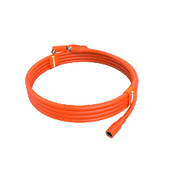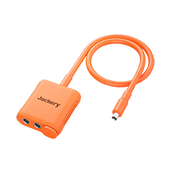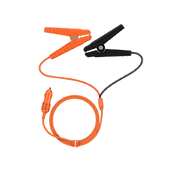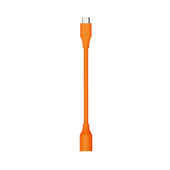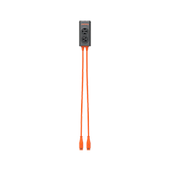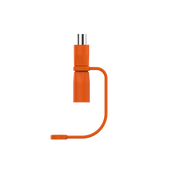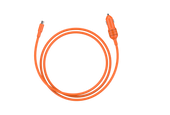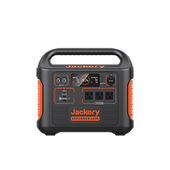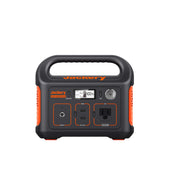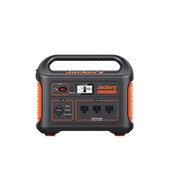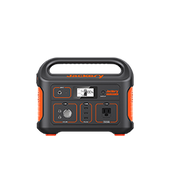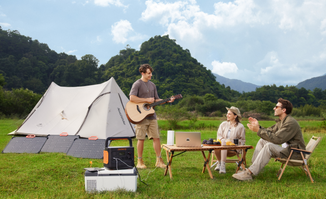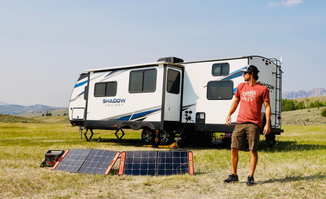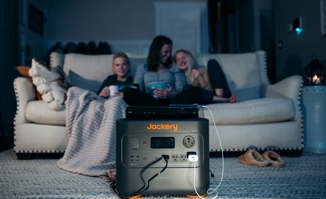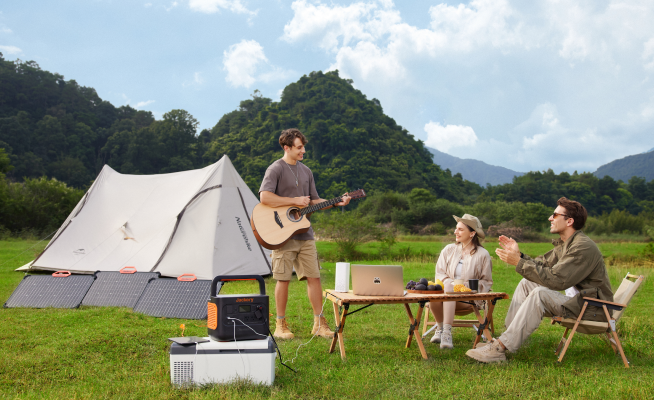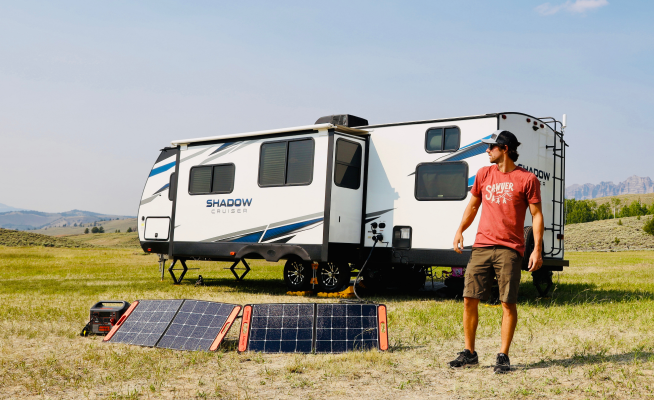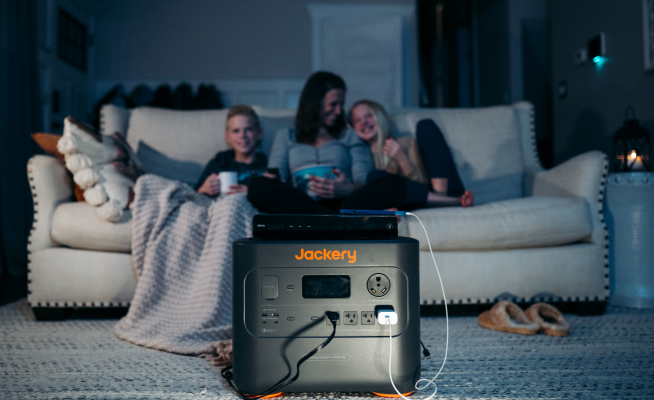The Ultimate Guide to Used Solar Panels
The phrase "one person's trash is another man's treasure" holds true for used solar panels. There is a thriving market of solar panels in America and many other parts of the world for individuals looking to buy new or second-hand solar panels.
Used solar panels are only preferable over brand-new panels and power stations if you are looking for a less expensive renewable power source. However, the downside to purchasing used solar panels is their shorter lifespan and reduced efficiency.

So, what is the solution? Buying solar panels that are affordable, portable, and long-lasting, like Jackery SolarSaga Solar Panels, is the best option. In this ultimate guide, we will reveal everything related to used solar panels, their upsides and downsides, and how to go solar in 2023.
What Is The Used Solar Panel?
A solar panel that has been owned by any individual or company previously is termed a used solar panel. In addition, a solar power panel that was purchased, taken out of the box, and never used will still fall under the "used solar panel" category.
On the far end, a solar power system that has been used for over 15 years (around half of its life) and has worn-out frames is still considered a used product. Hence, it's worth noting that not all used solar panels have the same quality.
Of course, these products are never as good as brand-new solar panels, but they are less expensive. Some of them are in better shape, while others have completely deteriorated.
The Value Of Used Solar Panels
The standardized way of pricing second-hand modules is the cost per watt. It is similar to how the prices of new solar panels are compared. Typically, the value of used solar panels ranges from $0.10 per watt to $0.60 per watt, depending on the age, condition, and brand.
However, the low value or cost of used solar panels does not mean they are at the end of their lifespan. Most solar panels are aged around 1-9 years and have a high-efficiency rate. Beyond the expenses, it's important to note the remaining lifespan and warranty of the solar panels before choosing one.
Note: The value of second-hand solar panel modules lies in the material used for manufacturing solar cells. They contain rare and non-renewable resources such as silver and tellurium. That being said, the used solar panels are used for the extraction of these rare materials.

What Qualified The Used Solar Panels?
Any solar panel that has been previously installed or used (in the case of portable panels) by an individual, entity, or company is called a used solar panel.
These solar panels, also called pre-owned or pre-installed, have been in use for a minimum of 15 years (half of their total lifespan). However, these panels have different lifespans, depending on their current condition and maintenance.
What Are The Refurbished Solar Panels?
A refurbished solar panel has been previously used but has undergone renovation and restoration to make it look like a new one. The process generally includes cleaning, repairing, and replacing damaged components of the solar panels. The product is professionally inspected, cleaned, and tested to work like the new one.
Some prominent features of refurbished solar panels include:
- Cost Effectiveness: Refurbished solar panels are typically priced lower than new panels.
- Reduced Environmental Impact: As existing equipment is used while choosing refurbished panels, it helps to reduce the carbon footprint associated with manufacturing new panels.
- Optimal Efficiency: As refurbished panels are tested and renovated to bring them back to new-like condition, they have higher efficiency than used solar panels.
Refurbished Vs. Used Solar Panels
The two available options for second-hand solar panels include used or refurbished products. Even though both solar panels fall under pre-owned products, they are slightly different.
While used solar panels are previously owned by an individual or entity, refurbished solar panels have been restored to a standard or acceptable condition by the manufacturer.
Below we have differentiated the two types of second-hand panels based on three crucial aspects.
System Performance
As the worn-out and faulty parts have been replaced by new ones, refurbished solar panels operate like new ones. However, they don't typically last as long as a new solar panel can.
On the contrary, used solar panels have some worn-out parts, and they break faster than refurbished panels. In addition, they require more care compared to refurbished or new panels to last long.
Cost
Refurbished panels cost more than used solar panels, as many parts have been restored or replaced. Jackery refurbished solar panels are 20-30% less expensive than brand-new panels.
Warranty
A few refurbished solar panels come with refurbished warranty periods, while many others don't come with any guarantee. Each Jackery refurbished machine comes a six-month warranty.
In the case of used solar panels, the warranty is typically transferred from the original owner to the new buyer. However, second-hand solar panels sold via the marketplace or online don't come with any warranty.
Check out the table below, where we quickly compare both types of second-hand panels.
|
Parameters |
Used Solar Panels |
Refurbished Jackery Solar Panels |
|
System Performance |
Less efficient |
Highly efficient |
|
Cost |
Low |
20-30% off new product |
|
Warranty |
Depends on the sold solar panels |
6 months |
Factors To Consider When Buying Used Solar Panels
Now that we have covered used solar panels in detail, it's time to delve into the factors one must consider while shopping.
Warranty
Used or refurbished solar panels don't typically have a manufacturer's warranty. But if they have, you should understand how much warranty period is left before investing your hard-earned money.
Cost
The cost of used solar panels is a critical factor to consider before buying. Though, you should steer clear of the panels that are priced very low. This is because, in such cases, the seller could be trying to hide worn-out cells, decreased power output, or damaged wiring. Extremely lucrative ads can be tempting at first glance, but they can be fishy when looked deeper.
Length of Service
Length of service refers to the time for which the solar panels were generating electricity before selling. Generally, a panel that has run for a short service period means it'll have a few worn-out parts and more lifespan remaining. Hence, it's better to consider panels with a short length of service.
Reason for Selling
Understanding the reason for selling can provide a glimpse into the overall condition of the solar panel. For instance, if the reason to sell the product is to switch to a more robust panel, chances are the product is in good condition. However, if the owner is selling the panels to buy the new one of the same model, probably the product is damaged.
Any Damages or Imperfections
A solar power system is exposed to all sorts of weather conditions ranging from high temperatures to cold winds. Rain, dust, high temperature, and debris can damage the outer surface of panels and reduce their efficiency. That's why it's vital to analyze cracks, broken PV cell connections, and moisture signs below the cover. Always remember not all damages are visible. Some imperfections, like high moisture build-up, can be hidden, but they can highly affect the longevity of panels.
Remember, buying used solar panels come with its own set of risks. However, understanding the five crucial factors will help you choose the system that lasts long.
How To Test Used Solar Panels?
When testing a used solar panel, you'll need a multimeter to measure open circuit voltage, short circuit voltage, and operating current.
Step 1: Measure Open Circuit Voltage (Voc)
Plug the black probe of solar panels into the COM terminal on the multimeter and the red probe into the voltage terminal. Set the multimeter to the DC (direct current) voltage setting. Now place your solar panel under direct sunlight and angle it towards the sun.
Locate the positive and negative solar panel cables. Connect the positive cable to the male MC4 connector. Be sure the multimeter's red probe touches the metal pin inside the MC4 connector (positive). Read the multimeter voltage and compare it with Voc listed on the solar panels.
Step 2: Measure Short Circuit Current (Isc)
Plug the red probe into the amperage terminal and set the multimeter to amp setting (A). Place your solar panel under direct sunlight and touch the red probe to the metal pin inside the positive connector.
Similarly, connect the black probe to the negative MC4 connector. Read the current on the multimeter and compare it to the short circuit current rating on the solar panel.
Step 3: Measure Operating Current (PV current)
To measure the operating current, you'll need a battery, solar charge controller, and a multimeter. Once you have all the equipment, start by connecting the negative solar cable to the negative adapter cable. But do not connect the positive solar cable. Prepare the multimeter to measure amps, similar to step 2.
Make sure the solar panels do not generate any power during the measurement. Connect the red-colored multimeter probe to the metal pin (on the male MC4 connector). Similarly, touch the black multimeter probe to the female MC4 connector. Turn the face of the solar panels to the sunlight and read the amps.
Note: The closer the ratings of the multimeter and the solar panels are, the better the efficiency of used solar panels.
Are Used Solar Panels Right For You?
Used solar panels may or may not be the right choice for any buyer. Though the deals are enticing at first, as you have to pay less, it could be a headache in the long run. Extensive research about the condition of solar panels and the manufacturer is vital before buying used or refurbished solar panels.
Here are some upsides and downsides of buying used solar panels as your reliable power backup source.
Pros
- Low prices than new ones
- Reduced wastage
- Great for DIY solar power systems
Cons
- Degraded power output and efficiency
- Need to be replaced sooner than their new counterparts
- High risk of buying damaged solar panels
If you're serious about going solar and wish to get a high return on investment, it's better to choose new or refurbished solar power panels. Even though the initial investment is a little higher, the new panels can benefit you in multiple ways. The long lifespan, warranty, and new internal components eliminate the risks from your purchase.
Best Portable Solar Panels With Jackery

Investing in portable power stations is the best way to go solar and ensure you can reap its benefits in the long run. Jackery is one of the best manufacturers of portable solar panels, power stations, and solar generators. The portable and powerful Jackery SolarSaga Solar Panels absorb solar power and convert it into electricity. The connected Explorer Portable Power Stations convert the DC electricity into AC current to charge the home or outdoor appliances.
The top three Jackery SolarSaga Solar Panels include Jackery SolarSaga 80W Solar Panels, SolarSaga 100W Solar Panels, and SolarSaga 200W Solar Panels.
Jackery SolarSaga 80W Solar Panels
The 2.8mm low iron full toughened glass, IP68 waterproof, and dual-sided panels make Jackery SolarSaga 80W Solar Panels a reliable power source. The innovative foldable and portable solar panels have a warranty of 36 months (or 3 years).
Jackery SolarSaga 100W Solar Panels
The SolarSaga 100W Solar Panels feature monocrystalline silicon solar cells with an efficiency of 24.3%. It comes with a 24 months (or 2 years) warranty period, ensuring you can enjoy solar power for a long period.
Let us compare them in the table below.
|
Products |
Compatible with |
Conversion Efficiency |
Input & Output Ports |
Warranty |
Specialty |
|
Jackery SolarSaga 100W Solar Panel |
Jackery Explorer 240/300/500/1000/1500 portable power station. |
24.3% |
USB-A Output: 5V, 2.4A USB-C Output: 5V, 3A |
24 months |
Multi-layered cell technology that offers the highest efficiency. ETFE-laminated solar cells offer durability. The foldable design, rubber handle, and adjustable kickstands make the panels portable. |
|
Jackery SolarSaga 80W Solar Panel |
All the Jackery power stations. |
25% |
/ |
36 months |
IP68 waterproof and dustproof capabilities of solar panels enhance their lifespan. The upgraded dual-sided solar panels generate electricity from both sides, making them highly efficient. |
The Afterlife Of Solar Panels
The process that occurs when solar panels and other crucial components are retired is called the afterlife of solar panels. The complete process can be broken down into the following stages:
- Collection and Transportation:Once the useful life of solar panels ends, the solar panels, frames, cables, and junction cables are transported to the recycling facility.
- Disassembly: The aluminum and glass parts of the solar panels are disassembled to prepare them for recycling.
- Sorting: Different materials of solar panels are sorted into categories, such as plastic, glass, and metal, to prepare them for the next step.
- Recycling: Here, the materials are processed and recycled to form new products. For instance, aluminum is melted to develop new products, glass is crushed to create new glass products, and PV cells are broken into their constituent elements and used in new solar panels.
- Waste Management: Any materials that are left unrecycled are disposed of in an eco-friendly manner.
During recycling, 80% of PV modules, 85% of silicon, 95% of semiconductor material, and 90% of glass are recycled for producing new solar panels.
Used Solar Panels FAQs
Now that you know the used solar panels and the factors to consider while buying them, here are a few questions related to them.
Can we use solar panels without a battery?
Yes. However, it is important to have battery storage for your solar panels to reap the benefits of power anytime and anywhere. As solar panels absorb solar energy from the sun, the battery can be used to store electricity and electrical power appliances when solar energy is not available. In addition, it can be a reliable power backup source during power outages, camping, and outdoor adventures.
What are solar panels used for?
Solar panels are the most essential parts of the PV solar system, and here is what they are used for:
- The sun constantly releases tiny energy packets called photons. Solar panels are used to convert the emitted photons into electricity.
- The more sunlight falls on the upper surface of the solar panels, the more power they can produce.
- As solar panels are made of silicon, photons cause the electrons to move and create an electric current.
- The electric current is produced as DC current and converted to AC using the solar power station.
- This AC energy is used to power small and large appliances like refrigerators, grills, mini-coolers, blankets, etc., for hours.

How to extend solar panel lifespan?
Solar panels are the most important parts of solar generators as they are responsible for converting sunlight into electricity. Here are simple tips to extend the lifespan of solar panels and maintain their efficiency.
- Clean the solar panels regularly by removing the debris, sharp objects, and rocks that can potentially damage them.
- Shelter portable power panels during extreme weather conditions such as rain, snow, etc.
- Protect the solar panels and power stations from extreme temperature fluctuations to improve their lifespan.
How to make full use of Jackery Solar Panels?
Jackery SolarSaga Solar Panels is a portable, renewable energy solution that helps you convert the sun's energy into electricity. They are used with Jackery Explorer Portable Power Station that converts the DC current into usable AC current to power a wide range of appliances. With the team of solar panels and portable power stations, you get a reliable renewable energy source in remote locations and during power outages.
If you want to choose the best solar generator model, consider investing in the powerful and portable Jackery Solar Generator 2000 Pro. It can charge all your small and large electrical appliances even if you are away from the electrical grid.
Final Thoughts
If you want to buy a solar system for your home or outdoor activities, buying used solar panels can often result in more problems than benefits. Fortunately, there is a solution to this.
Jackery SolarSaga Solar Panels and Explorer Portable Power Station are affordable renewable energy sources. Different models with various battery capacities, power, and features are available for buyers with different budgets.
For instance, if you want to charge all the essential home appliances during power outages, you can consider investing in solar generator models like Jackery Solar Generator 2000 Pro. It combines Jackery Explorer 2000 Pro Portable Power Station and six SolarSaga 200W Solar Panels, and other bundle options.
Sign up for the Jackery newsletter to receive instant updates about news, promotions, and deals.
Disclaimer:
The runtime mentioned for appliances powered by Jackery is for reference only. Actual runtime may vary under different conditions. Please refer to real-world performance for accurate results.






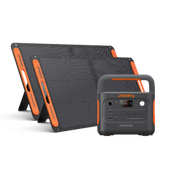


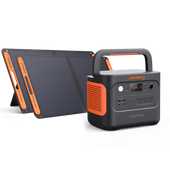

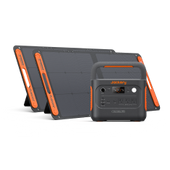
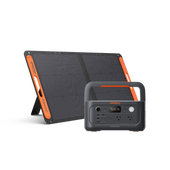
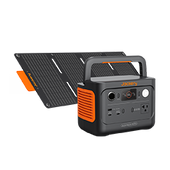
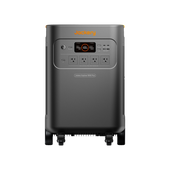
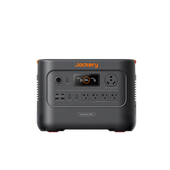
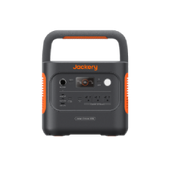
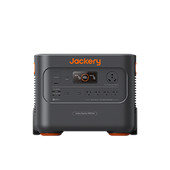
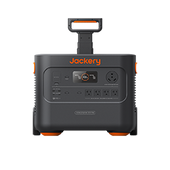

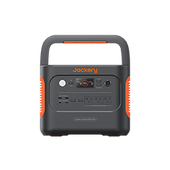
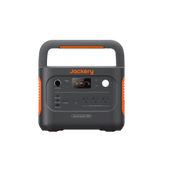
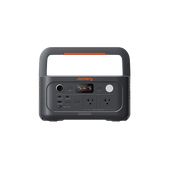

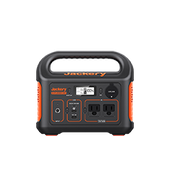
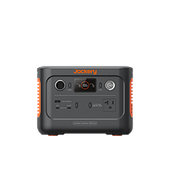
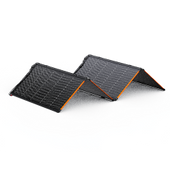
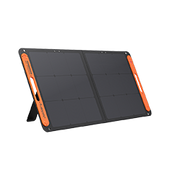

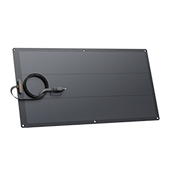
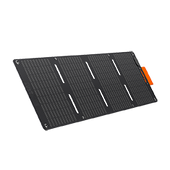
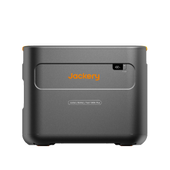
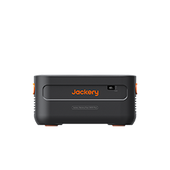
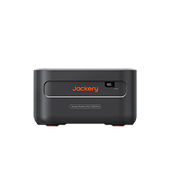
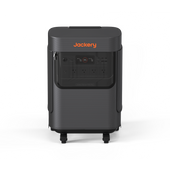
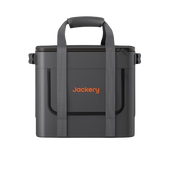
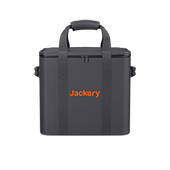
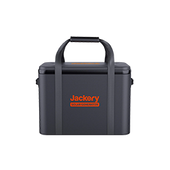
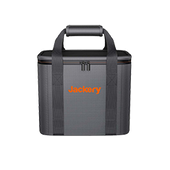
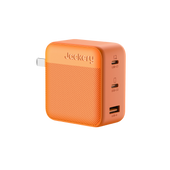
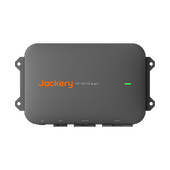
![[Add-on] Jackery Manual Transfer Switch for Explorer 5000 Plus](http://ca.jackery.com/cdn/shop/files/add-on-jackery-manual-transfer-switch-for-5000-plus-240V.webp?v=1757043692&width=170)
